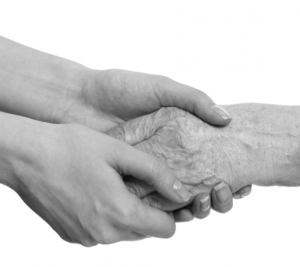It’s not often that a talk completely changes the way I think about something.
I’ve been thinking and speaking about compassion fatigue for many years. I recently had the privilege of hearing a wonderful talk by Roshi Joan Halifax. She made a strong and convincing case that “compassion fatigue” is a misnomer… and that we should think about this in a very different way.
We can never have too much compassion nor can true compassion result in fatigue.

Photo credit
Empathy and compassion are not the same thing.
Empathy is a necessary prerequisite for compassion, but compassion goes beyond empathy. Empathy is the ability to be with someone who is suffering, to be able to feel what they are feeling. Compassion, on the other hand, is being for someone who is suffering, being moved to act and find a way to relieve their suffering.

Link to Roshi Joan Halifax TED talk “Compassion and the true meaning of empathy”
Self-regulation is the key to being able to remain compassionate and this skill can be taught.
We all respond to situations of suffering with “arousal”, a state that varies in intensity depending on the severity of the suffering, and our own memories and experiences. How you respond to this state determines whether you can stay present, effective and compassionate. Roshi Joan Halifax offered the mnemonic “GRACE” as a way to teach this skill to medical students, residents, physicians, nurses and other health care professionals.
G: Gather your attention. Take three deep breaths. Be present.
R: Recall your intention. We choose careers in medicine to help heal the sick and to reduce suffering. It’s not easy to remember this intention when we are overwhelmed. But, in the moment we are faced with a human being who is suffering, we must let our own response (and the demands of the day) go and remember why we are here.
A: Attend to yourself. Being able to detect what is going on in your own body is the same “wiring” you use when you feel empathy. After gathering your attention and recalling your intention, pay attention to what is going on in your body. Watch your breath, feel where there is tension, pay attention to sensations.
C: Consider what will really serve. Moving from empathy to compassion is defined by considering the actions that will relieve suffering. Really consider the person and the situation and decide what is most likely to improve the situation.
E: Engage ethically.
“Developing our capacity for compassion makes it possible for us to help others in a more skillful and effective way. And compassion helps us as well.” Joan Halifax

Photo credit
This post originally appeared January 13, 2014 on Dr. Brandt's website Wellness Rounds
~~~
 Mary L. Brandt, M.D. is a professor of Surgery, Pediatrics, and
Medical Ethics at Baylor College of Medicine and a practicing pediatric
surgeon at Texas Children’s Hospital. She is involved in education on a
day-to-day basis in her clinical work. She also thinks about medical
education on a bigger scale through her work as Vice Chair of Education
of the Michael E. DeBakey Department of Surgery and Associate Dean of
Student Affairs at Baylor College of Medicine. She actively blogs and tweets.
Mary L. Brandt, M.D. is a professor of Surgery, Pediatrics, and
Medical Ethics at Baylor College of Medicine and a practicing pediatric
surgeon at Texas Children’s Hospital. She is involved in education on a
day-to-day basis in her clinical work. She also thinks about medical
education on a bigger scale through her work as Vice Chair of Education
of the Michael E. DeBakey Department of Surgery and Associate Dean of
Student Affairs at Baylor College of Medicine. She actively blogs and tweets.
No comments:
Post a Comment